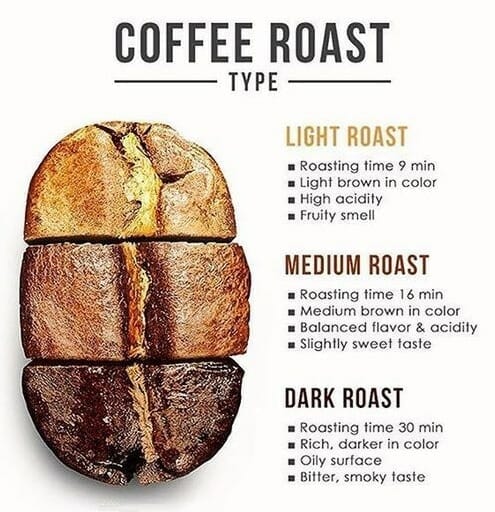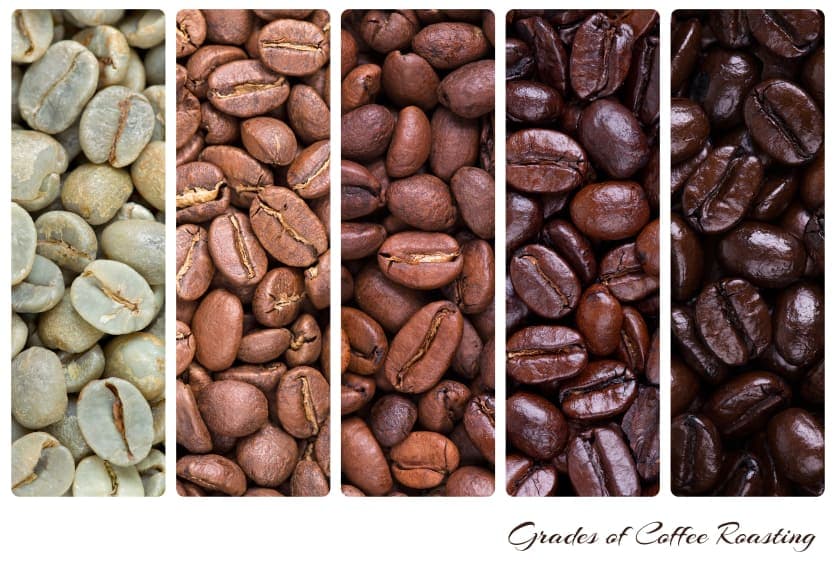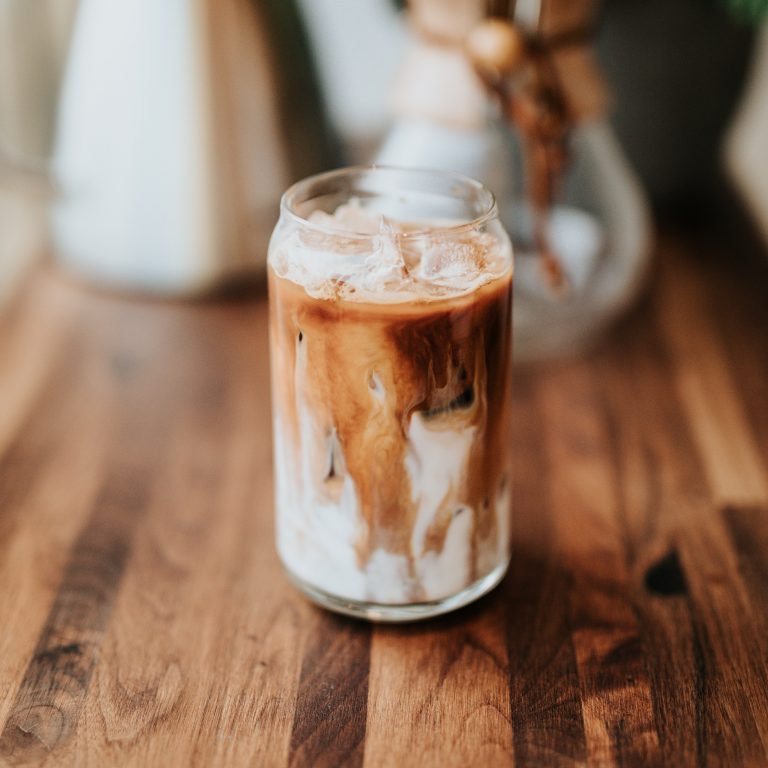How to roast coffee?
It is a debate that can give rise to strong attitudes. We give you the definitive answer here.
How to roast coffee? Should it be light or dark?
It’s a question that most coffee nerds have been pondering over and over. Personally i prefer slightly lighter roasts, but my husbond likes a darker roast.
So it must be time for one thorough answer that can rise above all the wondering, and let us us decide the answer to the question once and for all.
This article will illuminate the issue from all sides so you are no longer in doubt!
But wherever we would like to proclaim the perfect roasting degree right now and then, we need to define the concepts even more clearly so that we do not just create even more confusion.

What is light and dark roast?
While it may seem a bit creepy, we will have to ask: What are dark and light roasts in reality?
The distinction between dark and light can cause some wonder, even among people in the environment around specialty coffee.
What is dark to me maybe light for you and vice versa!
To understand the problem a little better, it is necessary to know something about roasting and coffee beans.
The roasted coffee is called ‘ green coffee ‘ as it often has a gray-green tone (and yellowish if it is getting too old). As with so many other foods, coffee becomes a different color when affected by heat.
The Maillard reaction is called the phenomenon of gastrophilic nerds.
“Non-enzymatic browning is seen by frying and baking; the brown color of the bread crust and the baked taste and smell are due to the reaction of sugars with the free amino groups of proteins in the so-called Maillard reaction.”
You could in principle take the coffee out of its drum grate (or oven) after a few minutes, put it in its coffee grinder, brew and drink it. It would just taste awful, probably a bit like hay, grass and unripe fruits.
That’s why you always roast longer so that the coffee gets its characteristic brown color. The toaster should stop at the earliest when it comes to what in English terms is called ‘first crack’.
When the coffee beans hit a temperature around 200 degrees, they pop exactly like popcorn. Depending on the grilling method, the first ‘crack’ occurs somewhere between 5 and 15 minutes.
From the first cascade of beans begins to pop to the last cold beat, typically 60 to 90 seconds go by. If you stop roasting right here, you will achieve the lightest drinkable roasting.
Why are hipsters fond of light carvings?
In recent years, we have heard more about ultra-hip light shakes with high acidity and back hair.
This trend is particularly known for Scandinavian roasters abroad – among others, The Coffee Collective, La Cabra and Tim Wendelboe are highlighted as banners for a so-called ‘Nordic roast’.
The idea behind the light roasting is to preserve more of the original nature of the prayer. The more you roast coffee, the more uniform it tastes regardless of the variety and cultivation country. Conversely, one preserves more of the original nature of the prayer by keeping the roasting light.
As the aforementioned roasters all make a great effort to find the best beans across the globe, it is therefore not strange that they will not shake the character out of them. It’s a bit like having a good steak – you don’t fry it well-done either.
So there is a logic to it: Exquisite beans are mostly toasted or in the lighter spectrum of a medium roast.
What is dark coffee?
Coffee actually pops not only once, but twice. If you continue to roast for a short time after the first crack, you come to what is called ‘second crack’.
Here we can start talking about a dark roast. This coffee takes clear flavors from the roasting. If you continue to shake for a while after another ‘crack’, you will typically see the completely dark roasts used in southern Europe, typically for espresso cups or the real product. If you continue, you risk charring the beans or burning them completely.

Light vs Dark Roasting
Pros & Cons
What is best?
It is not a definitive answer, it depends very much on the taste preferences and for what purpose the coffee is roasted.
Let’s review the characteristics of the taste by light and dark roasting respectively. (There are an incredible number of names for different degrees of light and dark roasting, but I will keep it simple in this post where I roughly divide the roasting into light and dark.)
Light roasting:
Light roasted beans tend to contain a higher acidity.
The lighter you shake the more acid the bean holds.
Some may associate acidity in coffee with a bad thing, but this is not necessarily the case.
In good quality coffee, the acidity can be incredibly delicate with hints of citrus, fruit and / or berries etc.
An advantage of light roasting is that the bean typically retains several of its unique characteristics, such as hints of peach, citrus or flower.
On the other hand, light roasting does not have nearly as full a mouthfeel as a dark roasting can offer, as the coffee is simply not roasted long enough to achieve a caramelization of the coffee’s various sugars and oils.
Dark roasting:
In dark roasting, the beans tend to lose their distinctive shades, giving the specific bean its unique flavor and aroma. The shades are simply dulled by the roasting and replaced with a more intense, deep and round taste.
As mentioned earlier, this happens because the roasting of the bean starts to break down the coffee’s natural sugars, resulting in a deeper, darker and more bitter cup of coffee. In beans that are well suited for dark roasting, you can achieve a delicious intense mouthfeel, as well as hints of, for example, nuts, chocolate, caramel etc. Again, it is not clear what is best, and it depends very much on who you ask.
However, I can say that the light roasted coffee has won the hearts of many baristas and coffee enthusiasts, as the light roasting simply allows you to delve deep into a huge world of different flavors and aromas.
So what’s best? Dark or light roasted?
Roasting is a double-edged sword, even when performed according to all the rules of art. For example, both sweetness, body and acidity are essential components of a good cup of coffee.
But these three characteristics peak at different times in the roasting. A perfectly roasted bean is thus a perfect compromise between the three qualities mentioned above.
It is a kind of equation where different parameters can be adjusted.
Just as your casserole can have a perfect balance between salty, sweet and sour, so coffee strives for a perfect balance.
So where does one find the best balance and thus the best roasting degree?
If you shake very lightly you get more acidity and less sweetness, while the reverse applies – to a certain extent.
My position is that the best balance is found at a medium-to-roasting level.
This profile is called “City+” among roasters.
But when we roast so light, there is also a danger. Have you ever had a cup of coffee at a hipster cafe and thought, “This tastes horrible”?
Then you most likely got coffee that was what roasters call ‘underdeveloped’.
When a bean is not roasted thoroughly enough, it often manifests itself in a cup of coffee that lacks sweetness, has a thin body and is acidic in an unpleasant way.
As light roasts have become and more ‘in’, there are more cafes trying them out. Unfortunately, they do not always have the skills to make a light roasting, which is also balanced. It takes some finesse.
Underdeveloped, lightly roasted coffee is a disgusting experience, and in fact, I’d rather drink coffee that is too dark roasted.
So the best coffee is lightly toasted – except when it’s not.
That’s why it’s complicated
No rules without exceptions, even when it comes to coffee.
Coffee is a berry that grows in nature. Optimally, the berry is red and ripe when picked. However, if the berry is picked before ripening, the natural sugar content has not developed enough. Shaking the bean from such a berry lightly or in between will taste rather bland. And it is a problem mostly coffee that is used commercially has low sugar content.
Simply take a lot of resources requires only picking ripe berries. Most of the coffee from the supermarkets is of such low quality that it will taste hideous by a light roasting.
But low sugar content is not the only challenge or exception. Before, we talked about equations. In some brewing methods, such as espresso, the equation is again completely different – that is, the ratio of sweet, acid and body – and you need something else.
Espresso and mocha pots taste best when roasted darker than city +. The same is true when there is milk in the coffee.
So is dark or bright the best? If the sun, moon, and stars are right, then we are declaring the answer is, light roasting is the best option.
Disclaimer:
In this post, we have not talked at all about different shaking profiles and strategies – it is a whole other debate that further complicates the topic.
Remember, if you got coffee thirsty from reading this article, I just want to remind you, that over on Amazon, you can find a great selection of good coffees at very nice prices! Initially I thought there was no way that Amazon had anything remotely decent, but I actually found some very beans, so why not try it.







